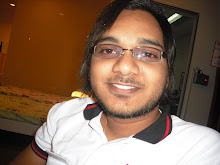
Laxmi is the beloved of Lord Narayan, also popularly known as Lord Vishnu. Everybody wants to please the Goddess of wealth and keep her appeased so as to have lot of wealth and peace.
According to the sculptures and paintings that have come down from ancient times, Owl is the carrier of Goddess Laxmi. If she travels with Lord Vishnu, she travels on the Garuda (Eagle). This travelling on both the animals has symbollic significance: An owl is supposed to be blind during the day and a wealthy person without the right kind of intellect cannot see beyond his richness. Therefore whenever Laxmi (The Goddess of Wealth) travels without Lord Vishnu she makes the person whom she visits metaphorically blind. However when the Goddess Laxmi travels with Lord Vishnu, She travels on a Garuda, which is the symbol of wisdom.
As a female counterpart of Lord Vishnu, Mata Lakshmi is also called "Shri", the female of the Supreme Being. Goddess Lakshmi means "Good Luck" to Hindus. The word "Lakshmi" is derived from the Sanskrit word "Laksya", meaning `aim` or `goal`, and she is the goddess of wealth and prosperity, both material and spiritual. Also `lakh` which means "one hundred thousand" as a monetary unit in India, is the first part of Lakshmi`s name, symbolizing her blessings that pour forth abundantly.
The story of Lakshmi`s birth begins when the Devas (minor gods) were in a race against the Asuras (demons) to obtain amrit (the nectar of immorality). The Devas consulted Vishnu who was on earth as Kurma, a tortoise. They decided they would churn the oceans for the amrit. They created to churn by the threading the serpent Vasuki around Mount Mandara. Kurma dived to the ocean floor and balanced Mount Mandara on his back.
In the grip of Kurma`s cosmic clutch, the mountain could not sink into the ocean bed. The gods churned and received the Nectar of Immortality from Lakshmi Devi and then fourteen treasures came to their hands. Lakshmi Chose Lord Vishnu as Her Consort. Vishnu carried Lakshmi from the ocean into His heaven. Each time Vishnu descends on earth as an avatar an avatar of Lakshmi accompanies him.




